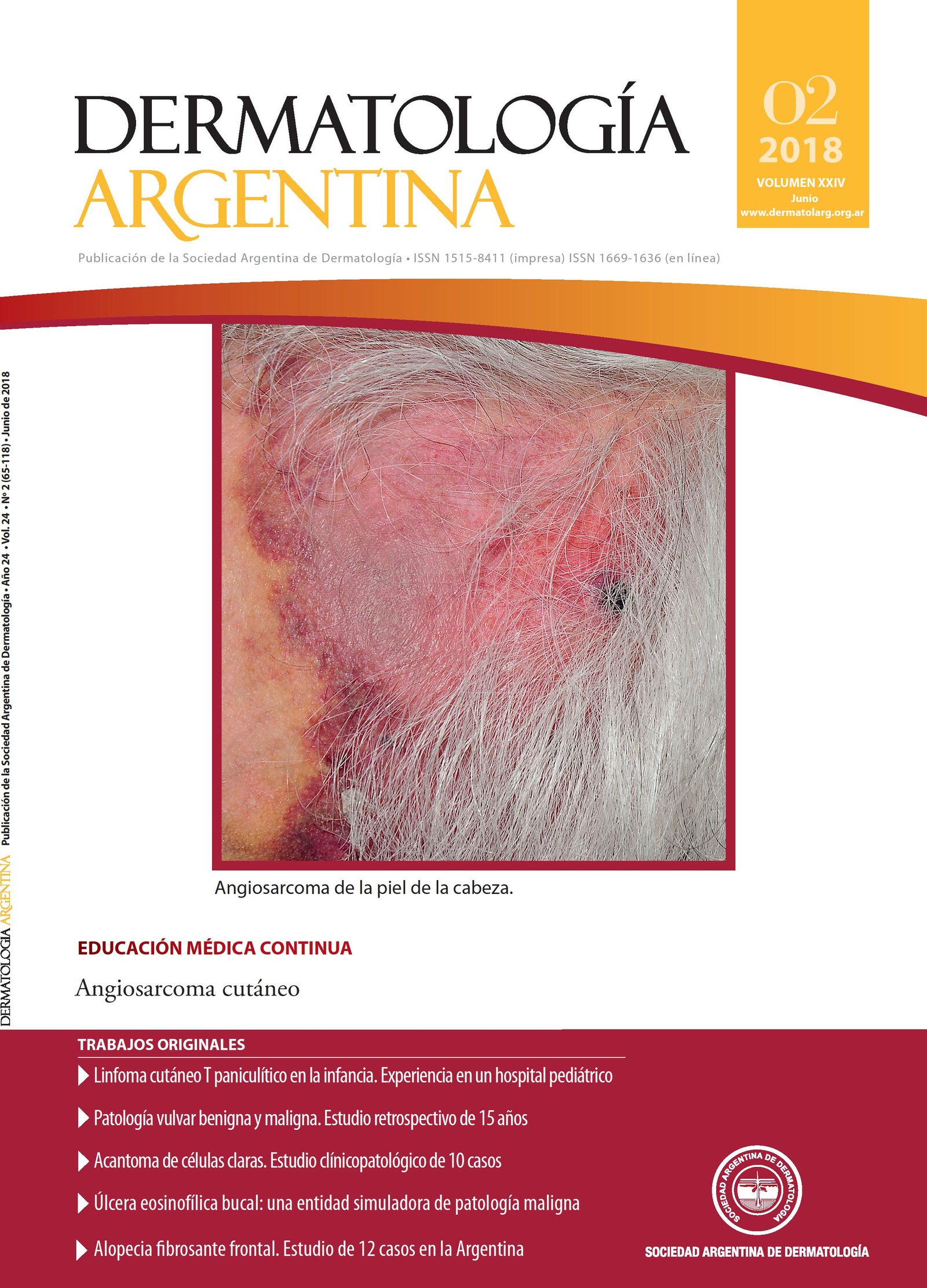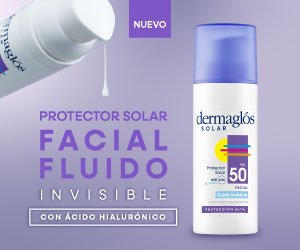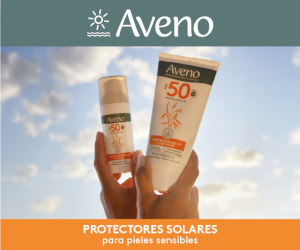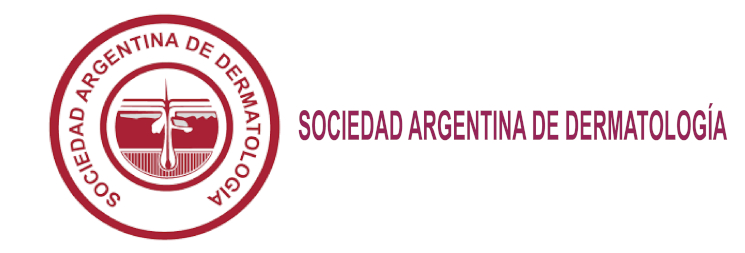Angiosarcoma cutáneo
Palabras clave:
angiosarcoma cutáneo, angiosarcoma de la piel de la cabeza, angiosarcoma posradioterapia, angiosarcoma asociado a linfedema, síndrome de Stewart-TrevesResumen
El angiosarcoma (AS) cutáneo es una neoplasia maligna poco frecuente (1,6% de los sarcomas cutáneos) y uno de los tumores de la piel más agresivos y de peor pronóstico. Tiene un origen celular mixto: vascular hemático y linfático. Casi la totalidad de los casos de angiosarcomas cutáneos (ASc) tienen tres patrones de presentación: el angiosarcoma idiopático de la piel de la cabeza (ASpc), el angiosarcoma asociado a linfedema crónico (ASlc) y el angiosarcoma secundario a radioterapia (ASrt). Asimismo, pueden observarse en la piel (con menor frecuencia), AS sobre otros territorios o patologías predisponentes y AS de localización visceral, en los que el compromiso cutáneo puede ser el primer signo para el diagnóstico.Aunque la rareza de esta patología y de sus variantes dificultan esta-blecer un tratamiento unificado, se ha observado una mejor sobrevi-da en los pacientes con terapia multimodal, que combinacirugía con quimioterapia y radioterapia.Entre las novedades terapéuticas se mencionan, por un lado, el uso creci-ente de betabloqueantes como adyuvantes para reducir el volumen tumoral. Por otro lado, la perfusión del miembro aislado se propone como alternativa a la amputación en el síndrome de Stewart-Treves (ST-T).
Citas
I. Requena C, Rubio L, Lavernia J, Machado I, et ál. Immunohistochemical and Fluorescence In Situ Hybridization Analysis of MYC in a Series of 17 Cutaneous Angiosarcomas: A Single-Center Study. Am J Dermatopathol 2018;40:349-354.
II. Morales Gordillo V, Armario Hita JC, Fernández Vozmediano JM. Angiosarcomas cutáneos. Med Cutan Iber Lat Am 2008;36:146-151.
III. Koch M, Nielsen GP, Yoon SS. Malignant tumors of blood vessels: angiosarcomas, hemangioendotheliomas, and hemangiopericytomas. J Surg Oncol 2008;97:321-329.
IV. Marcon I, Collini P, Casanova M, Meazza C, et ál. Cutaneous angiosarcoma in a patient with xeroderma pigmentosum. Pediatr Hematol Oncol 2004;21:23-26.
V. Martín P, Pulpillo A, Cabrera R, Conejo-Mir J. Abdominal wall angiosarcoma in a patient with drug-induced immunosuppression following renal transplantation. Actas Dermosifiliogr 2016;107:162-163.
VI. Oskrochi AY, Razi BK, Stebbing CJ, Crane AJ. Angiosarcoma and dialysis-related arteriovenous fistulae: a comprehensive review. Eur J Vasc Endovasc Surg 2016;51:127-133.
VII. Albores-Saavedra J, Schwartz AM, Henson D, Kostum L. Cutaneous angiosarcoma. Analysis of 434 cases from the Surveillance, Epidemiology, and End Results Program, 1973-2007. Ann Diagn Pathol 2011;15:93-97.
VIII. Pawlik TM, Paulino AF, McGinn CJ, Baker LH, et ál. Cutaneous angiosarcoma of the scalp: a multidisciplinary approach. Cancer 2003;98:1716-1726.
IX. Rouhani P, Fletcher CD, Devesa SS, Toro JR. Cutaneous soft tissue sarcoma incidence patterns in the US: an analysis of 12,114 cases. Cancer 2008;113:616-627.
X. Shustef E, Kazlouskaya V, Prieto VG, Ivan D, et ál. Cutaneous angiosarcoma: a current update. J Clin Pathol 2017;70:917-925.
XI. Styring E, Fernebro J, Jönsson PE, Ehinger A, et ál. Changing clinical presentation of angiosarcomas after breast cancer: from late tumors in edematous arms to earlier tumors on the thoracic wall. Breast Cancer Res Treat 2010;122:883-887.
XII. Patel SH, Hayden RE, Hinni ML, Wong WW, et ál. Angiosarcoma of the scalp and face: the Mayo Clinic experience. JAMAOtolaryngol Head Neck Surg 2015;141:335-340.
XIII. Singla S, Papavasiliou P, Powers B, Gaughan J, et ál. Challenges in the treatment of angiosarcoma: a single institution experience. Am J Surg 2014;208:254-259.
XIV. West JG, Weitzel JN, Tao ML, Carpenter M, et ál. BRCA mutations and the risk of angiosarcoma after breast cancer treatment. Clin Breast Cancer 2008;8:533-537.
XV. Penel N, Grosjean J, Robin YM, Vanseymortier L, et ál.Frequency of certain established risk factors in soft tissue sarcomas in adults: a prospective descriptive study of 658 cases. Sarcoma 2008. doi:10.1155/2008/459386, [consulta: enero de 2018].
XVI. Ishida Y, Otsuka A, Kabashima K. Cutaneous angiosarcoma: update on biology and latest treatment. Curr Opin Oncol 2018; 30:107-112.
XVII. Wagner JM, Vinod R, Menter DG, Sood AK. Endothelial cell malignancies: new insights from the laboratory and clinic. NPJ Precision Oncology 2017;1:11; doi:10.1038/s41698-017-0013-2.
XVIII. Requena L, Sangueza OP. Cutaneous vascular proliferations. Part III. Malignant neoplasms, other cutaneous neoplasms with significant vascular component, and disorders erroneously considered as vascular neoplasms. J Am Acad Dermatol1998;38:176-178.
XIX. Neglia V, Harris P, Mobilia M, Abeldaño A, et ál. Angiosarcoma de cuero cabelludo. Casos clínicos y revisión de la literatura. Dermatol Argent 1997;3:42-47.
XX. North PE, Hull CH, Kincannon J.Neoplasias y proliferaciones seudoneoplásicas vasculares. En: Bolognia J, Jorizzo J, Rapini RP. Dermatología. Elsevier, Madrid, 2004:1833-1835.
XXI. Chiu CS, Lin CY, Kuo TT, Kuan YZ, et ál. Malignant cutaneous tumors in the scalp: study of demographiccharacteristics and histologic distributions of 398 taiwanese patients. J Am Acad Dermatol 2007;56:448-452.
XXII. Marini MA, Casas JG, Baldrich MA. Angiosarcoma de la piel de la cabeza. Arch Argent Dermatol 2003;53:207-212.
XXIII. Magnin PH, Schroh RG, Carrera GF. Angiosarcoma de la piel de la cabeza. Rev Arg Derm 1987;78:30-31.
XXIV. Dossett LA, Harrington M, Wayne Cruse C, González RJ. Cutaneous angiosarcoma. Curr Probl Cancer 2015;39:258-263.
XV. Sturgis EM, Potter BO. Sarcomas of the head and neck region. Curr Opin Oncol 2003;15:239-252.
XVI. Huang X, Sun S. Primary eyelid angiosarcoma in a Chinese patient. Int J Clin Exp Pathol 2015;8:8636-8638.
XVII. Aguila LI, Sánchez JL. Angiosarcoma of the face resembling rhinophyma. J Am Acad Dermatol 2003;49:530-531.
XVIII. Murray S, Simmons I, James C. Cutaneous angiosarcoma of the face and scalp presenting as alopecia. Australas J Dermatol2003;44:273-276.
XXIX. Wen S, Zhang W, Yang Y, Sun J. Angiosarcoma of the scalp and face associated with Kasabach-Merritt syndrome and disseminated intravascular coagulation. Indian J Dermatol Venereol Leprol 2016;82:96-97.
XXX. LeBoit PE, Burg G, Weedon D, Sarasain A. World Health Organization Classification of Tumours. Pathology and Genetics of Skin Tumours. IARC Press: Lyon 2006; 236-243.
XXXI. Asgari MM, Cockerell CJ, Weitzul S. The head-tilt maneuver: a clinical aid in recognizing head and neck angiosarcomas. Arch Dermatol 2007;143:75-77.
XXXII. Sholl LM, Barletta JA, Hornick JL. Radiation-associated neoplasia: clinical, pathological and genomic correlates. Histopathology 2017;70:70-80.
XXXIII. Toll A. Cutaneous angiosarcoma: the importance of clinical suspicion. Actas Dermosifiliogr 2017;108:394.
XXXIV. Ford SJ, Almond LM, Gronchi A. An Update on Non-extremity Soft Tissue Sarcomas. Clin Oncol (R Coll Radiol) 2017;29:516-527.
XXXV. Wen-Hui Chen, Bai-Yao Wu, Wei-Ming Wang. Distinction of a postradiation atypical vascular lesion from cutaneous angiosarcoma in a patient with a history of breast cancer. Dermatologica Sinica 2014;32:187-188.
XXXVI. Gengler C, Coindre JM, Leroux A, Trassard M, et ál. Vascular proliferations of the skin after radiation therapy for breast cancer: clinicopathologic analysis of a series in favor of a benign process: a study from the French Sarcoma Group. Cancer 2007;109:1584-1598.
XXXVII. Combemale P, Hetu J, Aubriot-Lorton MH, Jeudy G, et ál.Cutaneous lesions in sporadic angiosarcomas of the breast: a misleading presentation. Eur J Dermatol 2016;26:287-289.
XXXVIII. Berebichez-Fridman R, Deutsch YE, Joyal TM, Olvera PM, et ál.Stewart-Treves Syndrome: A Case Report and Review of the Literature. Case Rep Oncol 2016;9:205-211.
XXXIX. Parra R LS, Marini MA. Angiosarcoma asociado a linfedema crónico. En: Marini MA, Casas JG, Saponaro AE. Tumores cutáneos malignos infrecuentes: sarcomas. Alfaomega, Buenos Aires, 2012:129-144.
XL. Cui L, Zhang J, Zhang X, Chang H, et ál. Angiosarcoma (Stewart-Treves syndrome) in postmastectomy patients: report of 10 cases and review of literature. Int J Clin Exp Pathol2015;8:11108-11115.
XLI. Lee R, Saardi KM, Schwartz RA. Lymphedema-related angiogenic tumors and other malignancies. Clin Dermatol2014;32:616-620.
XLII. Shin JY, Roh SG, Lee NH, Yang KM. Predisposing factors for poor prognosis of angiosarcoma of the scalp and face: Systematic review and meta-analysis. Head Neck 2017;39:380-386.
XLIII. Deyrup AT, McKenney JK, Tighiouart M, Folpe AL, et ál. Sporadic cutaneous angiosarcomas: a proposal for risk stratification based on 69 cases. Am J Surg Pathol 2008;32:72-77.
XLIV. Alan S, Aktas H, Ersoy ÖF, Aktümen A, et ál. Stewart Treves syndrome in a woman with mastectomy. J Clin Diagn Res2016;10(2):WD01-WD02.
XLV. Peterson CB, Beauregard S. Radiation-induced breast angiosarcoma: case report and clinical approach. J Cutan Med Surg 2016;20:304-307.
XLVI. Nashan D. Cutaneous sarcomas. Journal Der Deutschen Dermatologischen Gesellschaft 2017; doi:10.1111/ddg.13249.
XLVII. Requena C, Sendra E, Llombart B, Sanmartín O, et ál.Angiosarcoma cutáneo: estudio clínico-patológico de 16 casos. Actas Dermosifiliogr 2017;108:457-465.
XLVIII. Lahat G, Dhuka AR, Hallevi H, Xiao L, et ál. Angiosarcoma: clinical and molecular insights. Ann Surg 2010;251:1098-1106.
XLIX. Trofymenko O, Curiel-Lewandrowski C. Surgical treatment associated with improved survival in patients with cutaneous angiosarcoma. J Eur Acad Dermatol Venereol 2018;32:e29-e31.
L. Li GZ, Fairweather M, Wang J, Orgill DP, et ál. Cutaneous radiation-associated breast angiosarcoma radicality of surgery impacts survival. Ann Surg 2017; 65:814-820.
LI. Young RJ, Woll PJ. Anti-angiogenic therapies for the treatment angiosarcoma: a clinical update. Memo 2017;10:190-193.
LII. Huis In ‘t Veld EA, Grünhagen DJ, Verhoef C, Smith HG, et ál. Isolated limb perfusion for locally advanced angiosarcoma in extremities: A multi-centre study. Eur J Cancer 2017;85:114-121.
LIII. Minaudo C, Marini MA. Tumores vasculares. En: Marini MA, Casas JG, Saponaro AE. Tumores cutáneos malignos infrecuentes: sarcomas. Alfaomega, Buenos Aires, 2012:105-128.
LIV. Sindhu S, Gimber LH, Cranmer L, McBride A. Angiosarcoma treated successfully with anti-PD-1 therapy – a case report. JImmunother Cancer 2017;5:58.
LV. Pasquier E, André N, Street J, Chougule A, et ál. Effective Management of Advanced Angiosarcoma by the Synergistic Combination of Propranolol and Vinblastine-based Metronomic Chemotherapy: A Bench to Bedside Study. EBioMedicine 2016;6:87-95.
LVI. Chow W, Amaya CN, Rains S, Chow M, et ál. Growth attenuation of cutaneous angiosarcoma with propranolol-mediated β-blockade. JAMA Dermatol 2015;151:1226-1229.
Descargas
Publicado
Número
Sección
Licencia
Derechos de autor 2018 Sociedad Argentina de Dermatología

Esta obra está bajo una licencia internacional Creative Commons Atribución-NoComercial-SinDerivadas 4.0.
El/los autor/es tranfieren todos los derechos de autor del manuscrito arriba mencionado a Dermatología Argentina en el caso de que el trabajo sea publicado. El/los autor/es declaran que el artículo es original, que no infringe ningún derecho de propiedad intelectual u otros derechos de terceros, que no se encuentra bajo consideración de otra revista y que no ha sido previamente publicado.
Le solicitamos haga click aquí para imprimir, firmar y enviar por correo postal la transferencia de los derechos de autor













